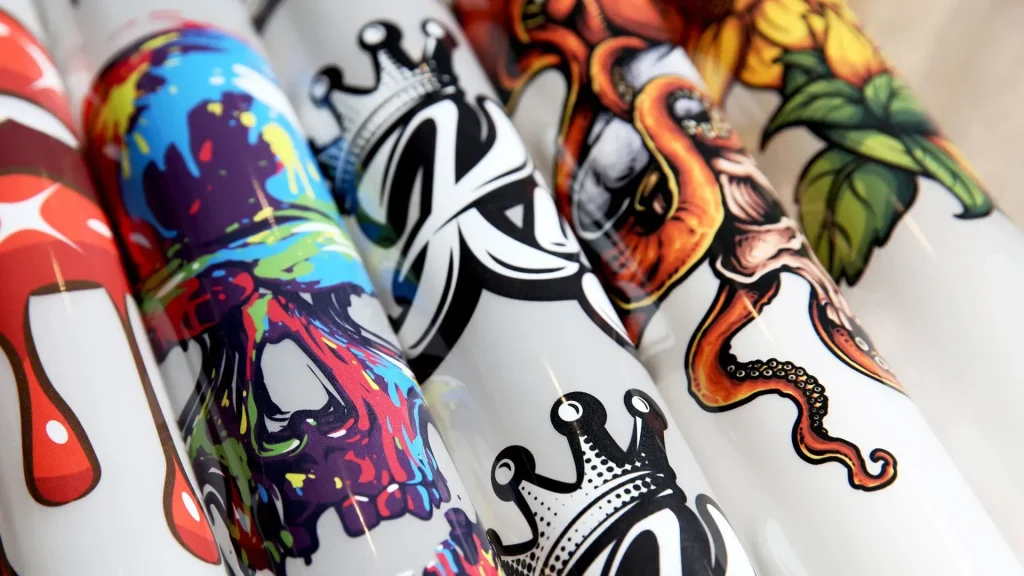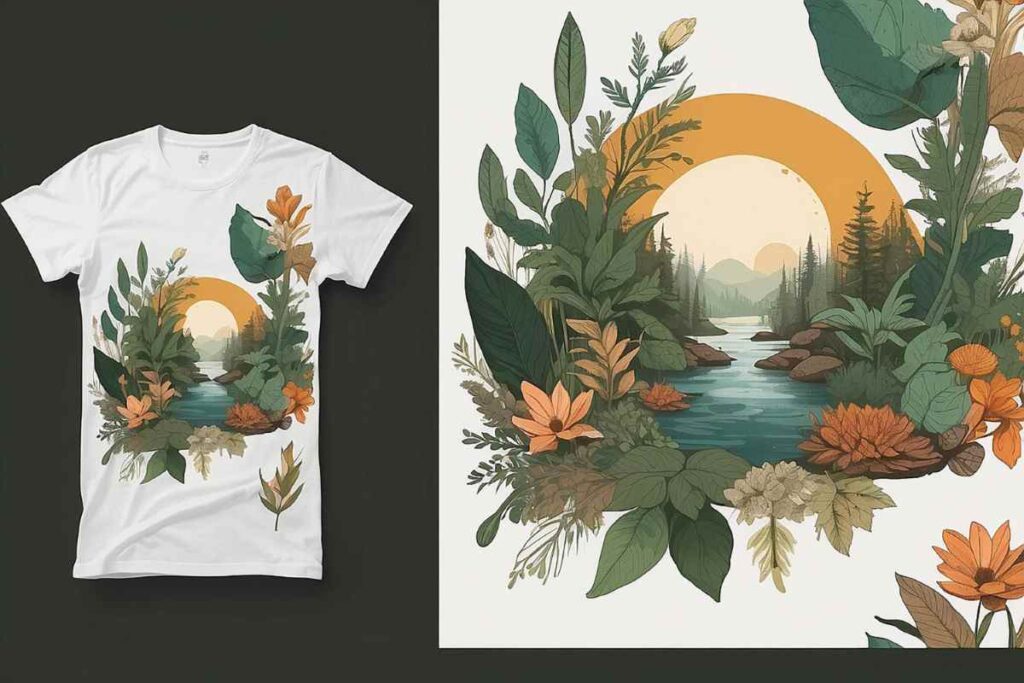DTF transfers, known as direct-to-film transfers, are revolutionizing the world of textile printing, offering a fresh approach for creatives and entrepreneurs alike. This innovative printing method allows for the production of vibrant, detailed designs on a variety of fabrics such as T-shirts and hoodies, making it a favorite among custom apparel makers. In this guide, you will discover essential tips and techniques for perfecting your DTF transfer application, ensuring your creations not only look stunning but also stand the test of time. Whether you’re looking to delve into the world of custom DTF designs or refine your existing skills with DTF printing tutorials, you’ll find invaluable information that caters to all levels of expertise. Join us as we explore the ins and outs of DTF printing, helping you unlock the full potential of this exciting technique.
The realm of direct-to-film (DTF) printing is quickly gaining popularity for those looking to create eye-catching custom prints. This method, often referred to as film transfer printing, streamlines the process of applying intricate designs directly onto textiles. As you dive into this comprehensive guide, you will uncover vital insights into DTF transfer application techniques and essential equipment recommendations to enhance your printing skills. From beginner tips to advanced strategies, this resource caters to everyone, whether you’re exploring custom designs or seeking to elevate your DTF printing game. With a focus on vibrant results and durability, this guide equips you with the knowledge necessary to excel in this booming industry.
Getting Started with DTF Printing: Essential Tips
Getting started with DTF printing can be an exciting yet overwhelming experience. To ease your journey, familiarize yourself with the equipment required. Investing in a quality DTF printer is non-negotiable, as this will significantly impact the quality of your prints. Look for printers known for their high resolution and color fidelity, like those made by Epson or Roland, which are celebrated in the DTF community for producing stunning, vibrant images. Additionally, you will need a reliable heat press that can maintain consistent temperature and pressure, ensuring even heat distribution during the transfer process. Without the right tools, your journey into DTF printing may not yield the desired results, so taking the time to research and select the right equipment is crucial.
Once you’re set up with the right technology, the next step is to create or gather your designs. Utilize high-resolution files, ideally set at 300 DPI, to ensure that every detail of your design comes through in your prints. It’s also essential to use the CMYK color profile during design preparation, as this will help avoid discrepancies between what you see on your computer screen and how the design appears when printed. Understanding the color settings and preparing quality designs will not only enhance the quality of your DTF transfers but also set a solid foundation for you to create custom DTF designs that truly pop.
The Importance of Material Selection in DTF Transfers
Material selection plays a pivotal role in the DTF printing process and greatly influences the outcome of your projects. DTF transfers are generally best suited for cotton, polyester, and their blends. Each fabric type interacts differently with the transfer process; for example, 100% cotton often results in a softer finish that feels more natural against the skin, while polyester blends can offer enhanced durability, making them ideal for sportswear or items subjected to heavy washing. Consequently, conducting tests on various fabrics to determine which materials yield the best results for your specific applications is highly recommended.
When it comes to selecting materials, also consider the end-use of your printed items. If creating apparel intended for casual wear, softer fabrics may be preferable. Conversely, for custom DTF designs on products meant for outdoor use or activities, using polyester blends can provide the longevity and resistance to wear and fading that consumers seek. By understanding the compatibility between DTF transfers and different fabric types, you can elevate your printing results and cater to diverse customer preferences.
Mastering Application Techniques for DTF Printing
Application techniques are critical to the success of your DTF printing projects. One of the best practices before transferring a design is to preheat your fabric briefly. This critical step helps eliminate moisture and enhances adhesion between the DTF transfer and the fabric surface, which ultimately results in a stronger bond. Additionally, using a protective sheet or Teflon cover during the heat application is recommended. This not only protects the design but also allows for a perfect transfer, ensuring no direct contact between the heat plate and the transfer itself.
Once you’ve completed the transfer, it’s important to allow the design to cool completely before peeling off the film. This cooling period is vital to prevent any smudging or damage to the newly applied design. To maintain the quality of the prints over time, implement proper post-application care such as washing items inside out and avoiding high heat settings during drying cycles. These steps will extend the lifespan of your DTF transfers, ensuring they remain stunning and intact even after multiple washes.
Exploring Eco-Friendly Trends in DTF Printing
As the world shifts toward sustainable practices, DTF printing is also evolving with innovative eco-friendly trends. More brands are now prioritizing the use of water-based and eco-conscious inks that reduce harm to the environment without sacrificing print quality. This shift not only caters to the increasing consumer demand for eco-friendly products but also positions businesses favorably in an environmentally aware marketplace. Embracing these sustainable solutions can enhance your brand’s image and appeal to a demographic that prioritizes responsible consumption.
Moreover, eco-friendly practices in DTF printing extend beyond inks. The adoption of sustainable materials for the films and the use of energy-efficient equipment are also gaining popularity. As advancements continue in the eco-friendly sector, businesses that align their operations with green initiatives not only contribute to environmental preservation but also attract customers who share these values. This trend highlights the importance of remaining current with advancements in DTF printing technology and practices to stay competitive.
Enhancing Design Creativity with Custom DTF Designs
The beauty of DTF transfers lies in their ability to empower creators to produce custom DTF designs that reflect their unique vision and aesthetic. This flexibility allows for a diverse range of applications, from personalized apparel to promotional items and beyond. By leveraging your creativity, you can create designs that resonate with various audiences, whether it’s custom graphics for sports teams, artistic expressions for fashion statements, or branding for businesses. The DTF process enables high-quality reproduction of intricate details, making it an ideal method for artists and entrepreneurs alike.
Exploring design software and tools that can facilitate your creative process can enhance your capabilities even further. Programs like Adobe Illustrator and CorelDRAW offer advanced features that can help you produce intricate designs that translate beautifully onto fabric. Additionally, following DTF printing tutorials online can provide new insights and techniques that can enhance your design approach. With the right resources and a receptive mindset, your journey into creating custom DTF designs can unlock an expansive world of infinite possibilities.
Critical Insights for a Successful DTF Printing Experience
To ensure a successful DTF printing experience, several critical insights must be considered. Start by understanding the entire workflow from start to finish—this includes every step, from selecting a design to the application process. Familiarization with direct-to-film printing will empower you to anticipate challenges and implement solutions more efficiently. The more you understand the intricacies of DTF transfers, the better positioned you are to create stunning results consistently.
Moreover, continual learning through resources like blog posts, forums, and online communities can greatly enhance your skill set. Participating in groups dedicated to DTF printing can provide real-time feedback and solutions to common issues, allowing you to refine your craft continually. Sharing experiences with fellow creators can lead to discoveries that enhance your understanding of DTF printing and help you stay informed of new trends and advancements that can benefit your projects.
Frequently Asked Questions
What is the DTF transfer process and how does it work?
The DTF transfer process, or direct-to-film printing, involves printing your design onto a specially coated film with quality inks. Afterward, a powdered adhesive is applied to the film, which bonds the ink to the fabric during a heat application. This method ensures vibrant and durable prints on various textiles, making DTF transfers a popular choice for custom printing.
What materials are best for DTF transfers?
DTF transfers are most effective on cotton, polyester, and fabric blends. Each material interacts differently with the DTF printing process, so testing on various fabrics is recommended. For example, 100% cotton offers a soft feel, while polyester blends provide durability, ensuring that your DTF designs look stunning on the chosen fabric.
What tips can improve my DTF printing results?
To enhance your DTF printing results, invest in high-quality equipment, including a reliable DTF printer and heat press. Use high-resolution design files (300 DPI) in the CMYK color profile for accurate color reproduction. Preheat fabrics before application to ensure better adhesion, and always follow proper post-application care to maintain the quality of your DTF transfers.
Can I create custom DTF designs for my business?
Yes, custom DTF designs are ideal for businesses looking to offer personalized products. DTF printing allows for small-batch orders with intricate designs, suitable for T-shirts, hoodies, and more. By utilizing DTF transfers, you can easily cater to customer demands for unique designs without compromising on quality.
Where can I find a DTF printing tutorial to improve my skills?
Numerous resources are available for DTF printing tutorials. Websites like Printavo and Coastal Business Supplies offer in-depth articles and videos guiding beginners through the DTF printing process. Additionally, YouTube hosts various video tutorials showcasing effective DTF application techniques and troubleshooting tips.
What are some common issues faced with DTF transfer applications?
Common issues in DTF transfer applications include poor adhesion, color mismatches, and smudging. To avoid these problems, ensure your printer settings are optimized for DTF, maintain proper heat press temperatures, and use protective sheets during application. Allow transfers to cool completely after peeling to prevent damage.
| Key Point | Details |
|---|---|
| Choosing the Right Equipment | Invest in quality DTF printers (like Epson and Roland) and reliable heat presses to ensure vibrant and durable prints. |
| Design Considerations | Use high-resolution files (300 DPI) and CMYK color profiles for accurate color replication. |
| Material Selection | Best substrates include cotton and polyester. Different fabrics yield varying results—test to find the best match. |
| Application Techniques | Preheat fabric to remove moisture, use protective sheets during heat application. |
| Post-Application Care | Allow designs to cool completely and wash inside out to extend longevity. |
| Latest Trends and Advancements | Incorporation of eco-friendly inks and expansion into small batch custom orders. |
Summary
DTF Transfers are revolutionizing the custom printing industry, providing creators with the ability to produce eye-catching designs on a variety of fabrics, from T-shirts to hoodies. This comprehensive guide outlines the essential steps—from selecting the right equipment and materials to applying the transfers effectively. By adhering to best practices and keeping up with the latest trends, such as eco-friendly inks and personalized product options, users can ensure their creations remain vibrant and appealing. Embarking on this journey with DTF transfers opens up new possibilities for artistic expression and entrepreneurial ventures, making it an exciting time for anyone involved in custom printing.


